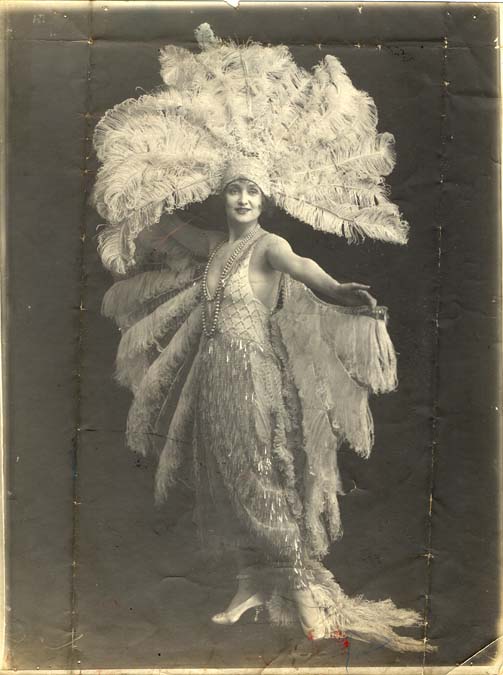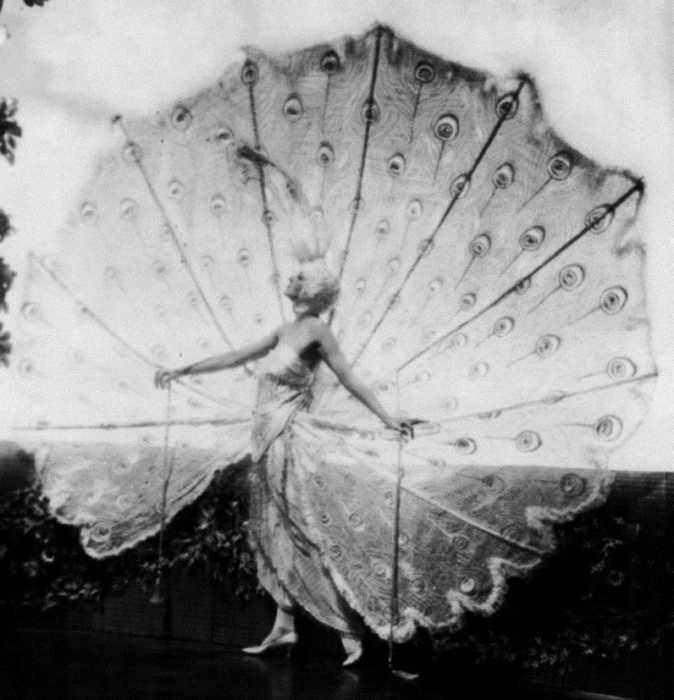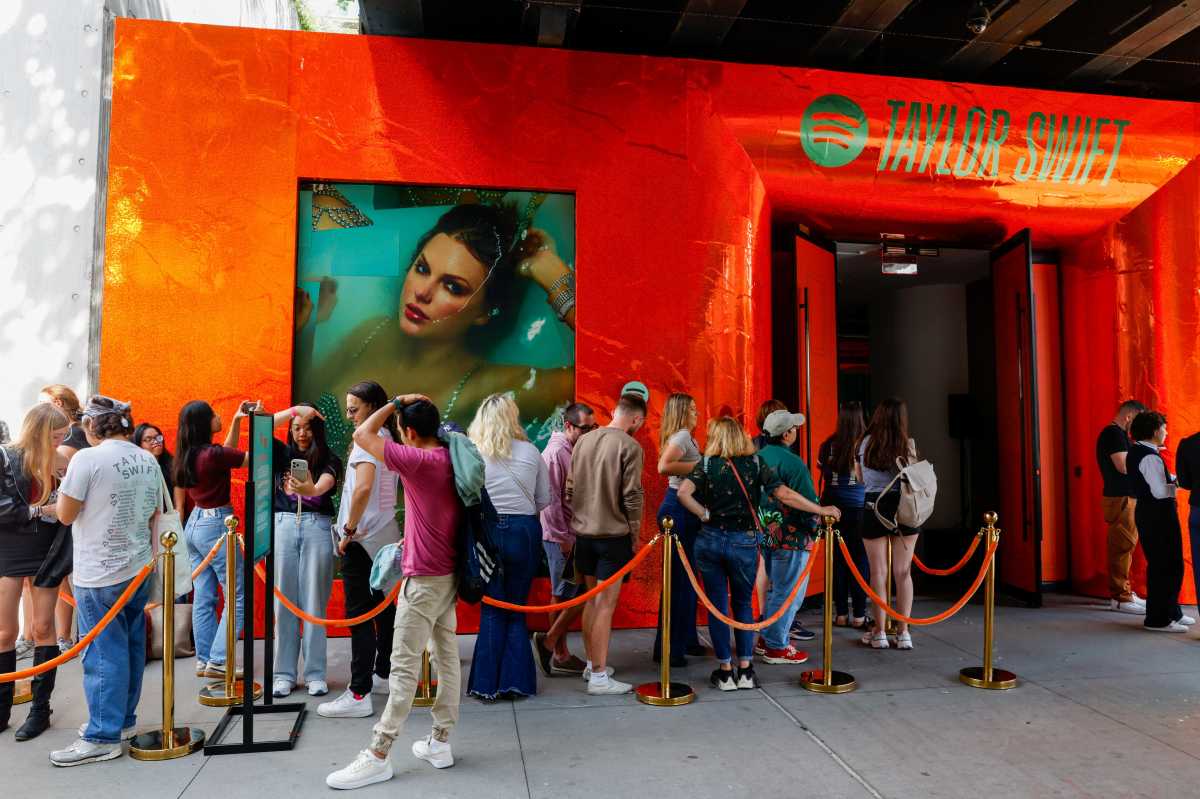The iconic feathered showgirl was born amid the chaos of the first world war, when the wealthy, global French superstar Gaby Deslys entertained Parisians and Allied soldiers in a 1917 show called ‘Laissez-les tombe!’ (Let Them Fall), a dazzling spectacle of ostrich feathers, rhinestones and beauty.
Although showgirls first appeared in late-19th century music halls, the red, white and blue feathered costumes in Deslys’ revue offered Paris something new and triumphal. The massed plumes, wild dancing and bodily displays celebrated French aesthetics and extravagance and communicated that France and her allies would not bow to Germany.
Prior to 1914 Deslys’s expensive jewelry, haute couture and expansive feathered hats – along with her affairs with powerful men such as department store magnate Harry Selfridge and King Manuel II of Portugal – created countless headlines.
But she was also outspoken about a woman’s right to support herself financially and worked tirelessly during the war raising funds for the Allies. Deslys was so passionate about aiding the devastated Parisian nightlife that she paid for all the costumes in ‘Laissez-les tombe!’ herself.
Deslys’s cultural impact has inextricably linked feathers, high fashion, celebrity and showgirls ever since.
From France to Broadway
Feathered showgirl revues were so popular that they quickly went global. In 1920s New York, impresarios such as Florenz Ziegfeld staged luxurious Broadway productions that glorified the American showgirl.
But he made exceptions to American women. One of Ziegfeld’s most famous showgirls, Dolores, was born into poverty in London’s East End as Kathleen Mary Rose. She rose to become a supermodel who walked for the couturier Lady Duff-Gordon, known professionally as Lucile.
Ziegfeld considered Dolores one of the world’s most beautiful women. Tall, slender and graceful, she drove audiences wild when she glided across Ziegfeld’s stage and posed in opulent costumes.
On becoming a showgirl, Dolores used her modeling ability to make her fortune, earning today’s equivalent of $10,000 a week by 1923.

Other performers harnessed the feathered showgirl aesthetic, including the celebrated twins Jenny and Rosie Dolly, who came from humble origins and used their beauty, talent and hard work to dominate American and European stages in the 1910s and 1920s.
Ziegfeld paid the Dollys the equivalent of $64,000 weekly in 1915. Like Deslys, they became notorious for their consumption of fashion and affairs with famous men.
However, stage revues became unpopular around 1930 due to their vast expense and the rise of cinema – so the showgirl traveled to Hollywood.
There, she was celebrated in biopics such as ‘The Great Ziegfeld’ (1936) with its glittering, feathered costumes by the designer Adrian.
In the second world war, showgirls boosted troop morale, like Deslys did in 1917.
Hollywood made feel-good films including the biopic ‘The Dolly Sisters’ (1945), which reimagined the brunette twins as all-American blondes by casting 1940s pinup stars Betty Grable and June Haver.
From Hollywood to Vegas
From there, the American showgirl arrived in Las Vegas, performing in every hotel and casino on the strip during the 1950s and 1960s.
Like the showgirls of yore, these performers’ allure was their grace, beauty, and extravagant, expensive costumes, produced by the world’s leading designers.
Showgirls remained a fixture of Las Vegas entertainment throughout the 1970s and 1980s. Choreographers including Donn Arden and Madame Bluebell (who also worked in the Parisian revues) created hallmark, visual spectacles featuring costumes by Bob Mackie.
Jubilee!, which opened at the old MGM Grand casino in 1981, was one such revue. In addition to the vast volume of plumes, it was claimed the show had caused a global shortage of Swarovski crystals because the costumes had used them all.

In 1986 the old MGM Grand became Bally’s Casino, but Jubilee! stayed. The costumes, some of which cost more than $7,000 each (roughly $25,000 today), were used six nights a year for 35 years and maintained by 18 wardrobe staffers.
Jubilee! closed in 2016, but its costumes live on as valuable cultural artifacts that celebrities borrow to reinterpret the American showgirl for 21st-century audiences.
This includes demonstrating that showgirls are independent, hardworking and talented women.
From Vegas to Taylor Swift
Burlesque performer Dita Von Teese draws on the American showgirls’ legacy by wearing costumes from Jubilee! in her Las Vegas cabaret, and called the 1945 Dolly Sisters film one of her inspirations.
Pamela Anderson wore Jubilee! costumes in ‘The Last Showgirl’ (2024), a film that highlights the sacrifices female performers often have to make to pursue their dreams.
Taylor Swift is the latest superstar to harness showgirl iconography. Photographs from her new album show Swift wearing the Jubilee! “Diamond” and “Disco” costumes by Mackie.
Another photograph shows Swift in a cloud of ostrich plumes and rhinestones wearing a dark, bobbed wig: a direct reference to 1920s American showgirls and performers such as the Dolly Sisters.
Swift’s stage costumes are by the world’s leading fashion designers, while her songs often reference historical celebrities to critique how the entertainment and media industry treat female performers.
Choosing Mackie’s Jubilee! costumes allows Swift to become the American showgirl (Taylor’s Version), by tapping into a century of glamor and signaling that she, too, has worked hard and made sacrifices to reach the top.



























